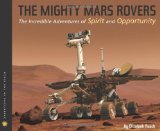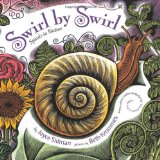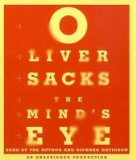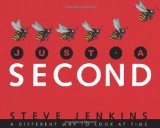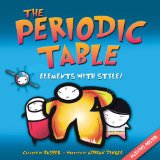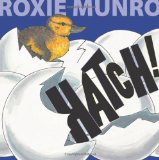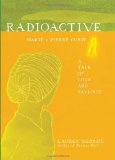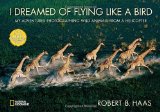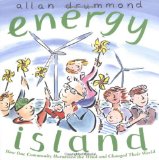Review of The Mighty Mars Rovers, by Elizabeth Rusch
The Incredible Adventures of Spirit and Opportunity
by Elizabeth Rusch
Houghton Mifflin Books for Children, Boston, 2012. 80 pages.
Starred Review
This book is part of the Scientists in the Field, and focuses on a particular scientist behind the project to first send rovers onto Mars. The book is riveting, informative, and of course, timely. Though it went to press before Curiosity reached Mars, it tells about the planned landing and will make readers want to find out more, and what’s going on right now.
The scientist whose dream is the focus of this book is Steven Squyres. In a brief introductory chapter, they tell about his career that brought him to the Mars Rover mission. He actually thought for awhile of becoming a geologist — which led directly to his interest in having a robot on the ground in Mars to study the planet directly.
He ended up writing proposals for a Mars rover for eight years and for eight years got refused. But he didn’t give up, and was eventually given three years to build two rovers to send to Mars.
The book tells about every step of the mission, with a multitude of photographs or artist’s renderings along the way. It’s all explained clearly. Here’s an example:
Steve and Pete considered how each decision would affect every other. For example, the scientists wanted to put as many instruments on the rover as possible: cameras, microscopes, drills, and a weather station. Engineers had to design solar panels large enough to power all the instruments. But if the rover got too big, it wouldn’t fit in the lander (the case that would protect the rover during landing). Even worse, if the rover and the lander got too heavy, the whole spacecraft would crash.
Steve and his team added instruments and cut instruments. Engineers redesigned solar panels again and again. As the parts were built, engineers tested them. Too often, parts failed. Electronics malfunctioned. Cable cutters designed to set the rovers free from their landers didn’t work properly. Parachutes responsible for slowing the rovers down as they careened toward the surface fluttered in the wind and ripped to shreds. Airbags that were supposed to cushion the fall of the rovers onto the surface of Mars tore.
If the parts didn’t work, how would the team ever get the rovers to work?
The book goes through the missions to Mars and how each rover landed in a different spot. Elizabeth Rusch explains how the rovers were operated once they landed on Mars and the many different obstacles they faced. She explains the process the scientists went through trying to decide if Opportunity could climb down into a crater and how they worked to rescue the rovers when they got stuck in the Martian sand.
The author beautifully communicates the stunning accomplishments of the Mars rover mission team. She sums up in her final chapter:
Steve and his team of scientists and engineers expected the rovers to last three months, tops. Spirit and opportunity endured for more than six years — and scientists are still counting. These little machines explored a record-breaking 25 miles (44 km) of Mars’s surface and snapped more than a quarter of a million photos there, including 360-degree views of hills, plains, and craters. They became so much more than rovers. They did the work of geologists, meteorologists, chemists, photographers, mountain climbers, and crater trekkers. . . .
“What connects all this for me is that I simply love to explore,” Steve said. “I love doing something nobody else has done, going someplace no one has ever been, discovering stuff no one has ever seen.”
This book communicates the magnificence of human endeavor in science, along with nitty-gritty details. It shows how real people can do what it takes to learn things humans never knew before.
elizabethrusch.com
marsrover.nasa.gov
hmhbooks.com
Find this review on Sonderbooks at: www.sonderbooks.com/Childrens_Nonfiction/mighty_mars_rovers.html
Disclosure: I am an Amazon Affiliate, and will earn a small percentage if you order a book on Amazon after clicking through from my site.
Source: This review is based on a library book from the Fairfax County Public Library.
Disclaimer: I am a professional librarian, but I write the posts for my website and blogs entirely on my own time. The views expressed are solely my own, and in no way represent the official views of my employer or of any committee or group of which I am part.
